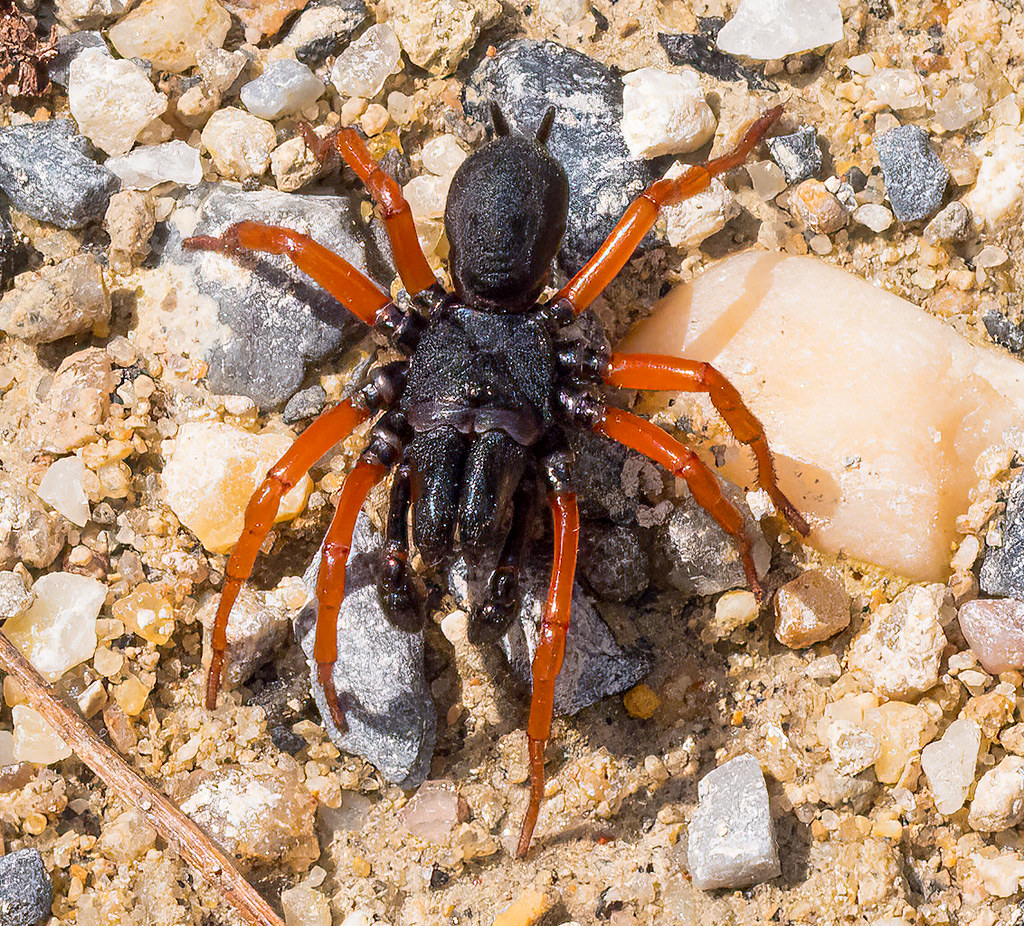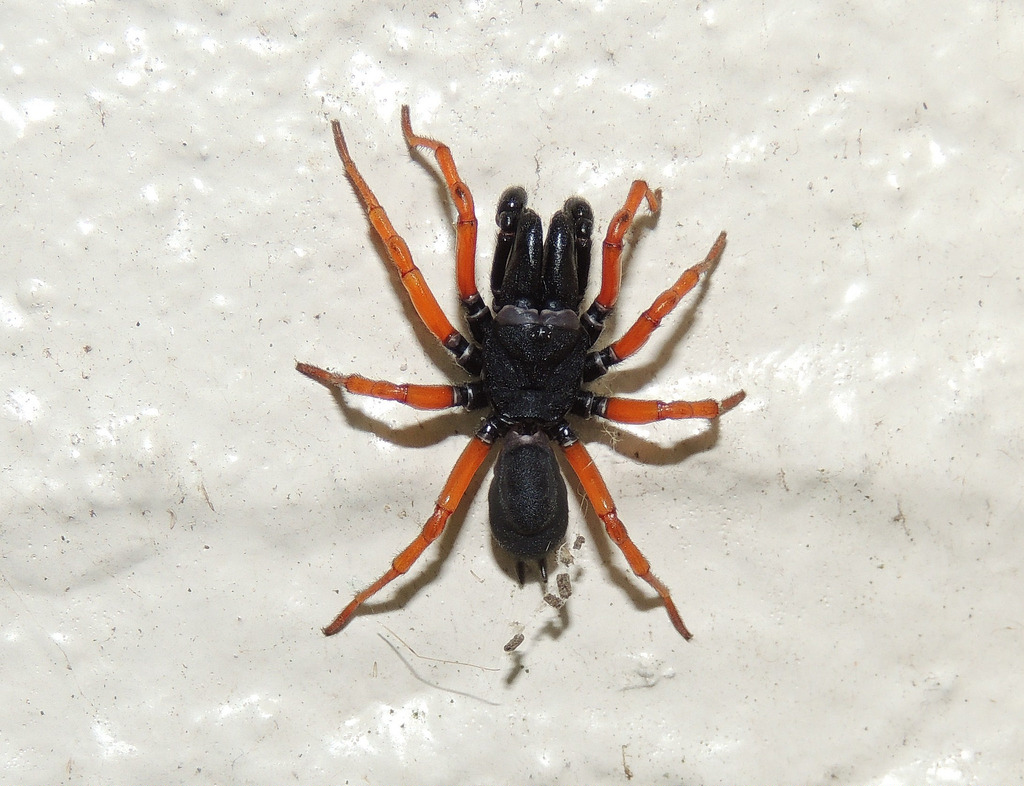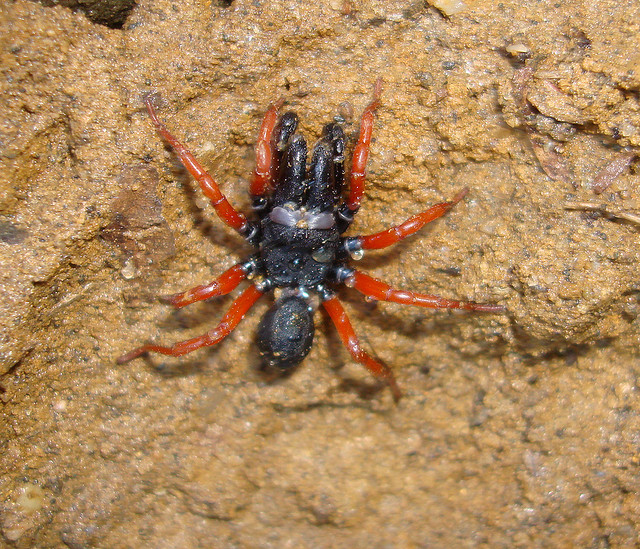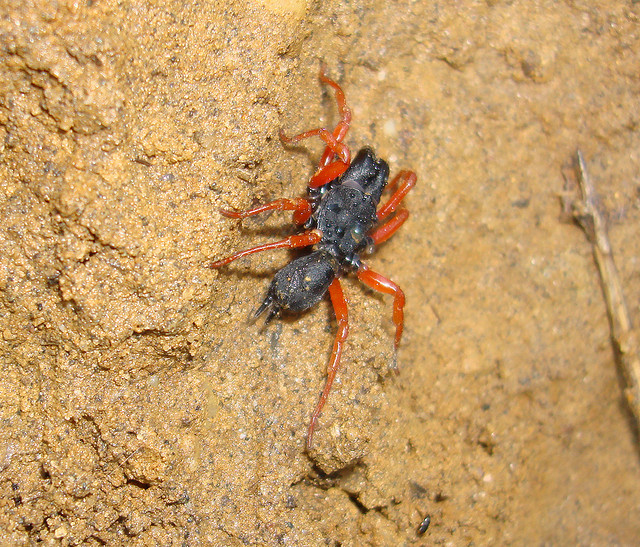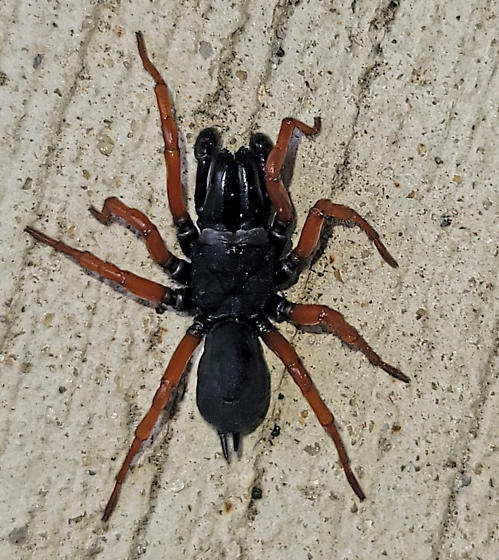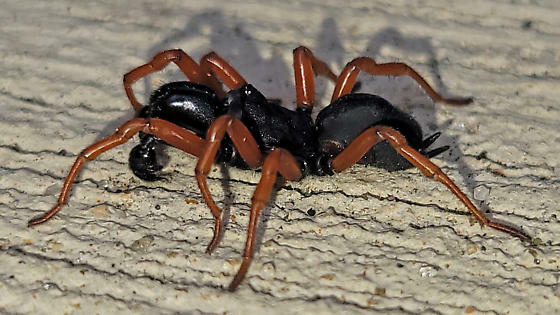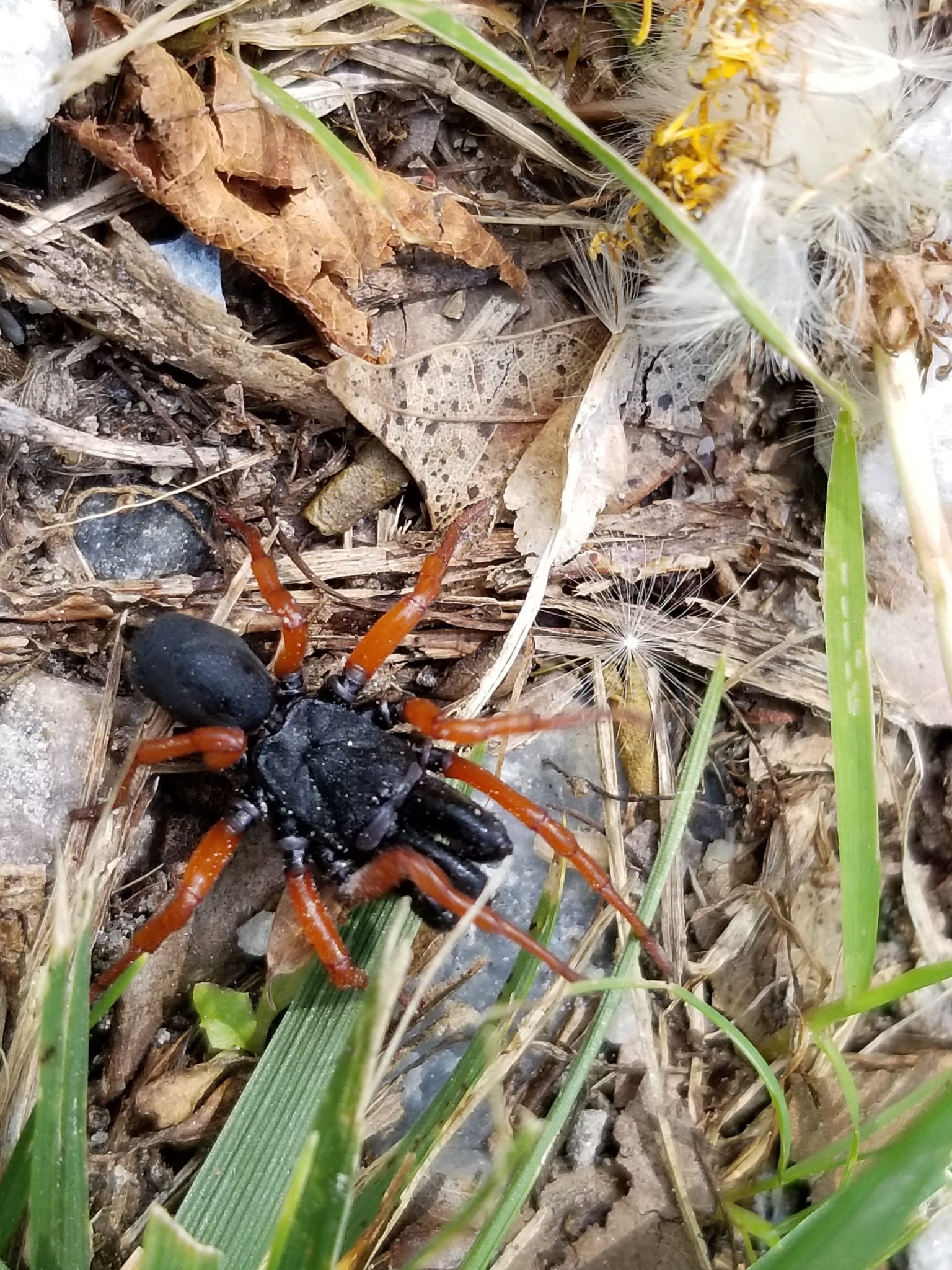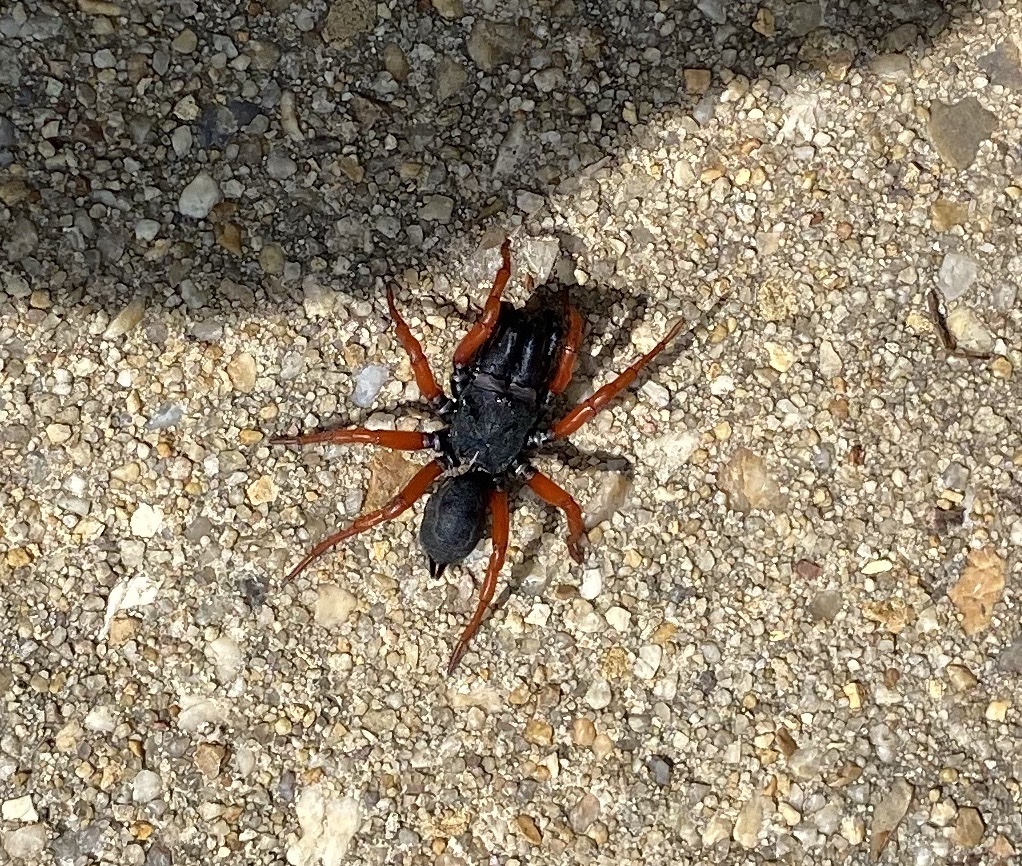Map Snapshot








23 Records
Seasonality Snapshot
Source: Wikipedia
| Sphodros rufipes | |
|---|---|

| |
| Male S. rufipes | |
| Scientific classification | |
| Domain: | Eukaryota |
| Kingdom: | Animalia |
| Phylum: | Arthropoda |
| Subphylum: | Chelicerata |
| Class: | Arachnida |
| Order: | Araneae |
| Infraorder: | Mygalomorphae |
| Family: | Atypidae |
| Genus: | Sphodros |
| Species: | S. rufipes
|
| Binomial name | |
| Sphodros rufipes (Latreille, 1829)
| |
| Synonyms[1] | |
| |
Sphodros rufipes, sometimes called the red legged purseweb spider, is a mygalomorph spider from the southern and eastern United States, though it has been photographed as far north as Minnesota. It has confirmed sightings in Indiana, Missouri, New Jersey, West Virginia, Tennessee, Delaware, Louisiana, and Tuckernuck Island in Massachusetts. One recent sighting shows that these spiders can also be found in Canada, while another reveals that they have been spotted in Kansas.[2]
The species name rufipes is Latin for 'red foot'.
Taxonomy
[edit]The species was first described as Atypus rufipes by Pierre André Latreille in 1829. It was transferred to the genus Sphodros in 1980. Sphodros and Atypus species can be distinguished by features of their genitalia. Sphodros males have a long, curved embolus lying in a similarly shaped conductor. Females have an epigynum with four long, coiled tubes.[3]
Description
[edit]These spiders are solid and strong-looking with reddish-brown to black bodies. The males have distinctive long red or red-orange legs from the femora downwards. The females have legs the same color as the body. Females are known to reach a body length of about 25 mm, or just under an inch, including the chelicerae. Males are smaller with a body length of about 15 mm. In males, the fourth pair of legs is longest at about 15 mm; in females, the first pair of legs is longest, at about 15.5 mm.[3] Like other spiders in the infraorder Mygalomorphae, they have fangs that point straight down rather than crossing.
Behavior
[edit]This spider has a distinctive method of catching its prey. It spins a tunnel of silk against the side of a tree or supported by stones or other convenient objects, and waits for its prey to land or climb on the side of the tunnel. Then the spider bites through the silk walls and pulls the prey inside. These spiders rarely leave their webs for any reason other than mating.
-
A male Sphodros rufipes, showing its large vertical fangs in a threat display
-
Sphodros species tube
References
[edit]- ^ "Taxon details Sphodros rufipes (Latreille, 1829)". World Spider Catalog. Natural History Museum Bern. Retrieved 2024-12-12.
- ^ What's That Bug: Sphodros rufipes Archived 2005-11-24 at the Wayback Machine
- ^ a b Gertsch, W. J. & Platnick, N. I. (1980). "A revision of the American spiders of the family Atypidae (Araneae, Mygalomorphae)" (PDF). American Museum Novitates. 2704: 1–39. Retrieved 2024-12-12.
